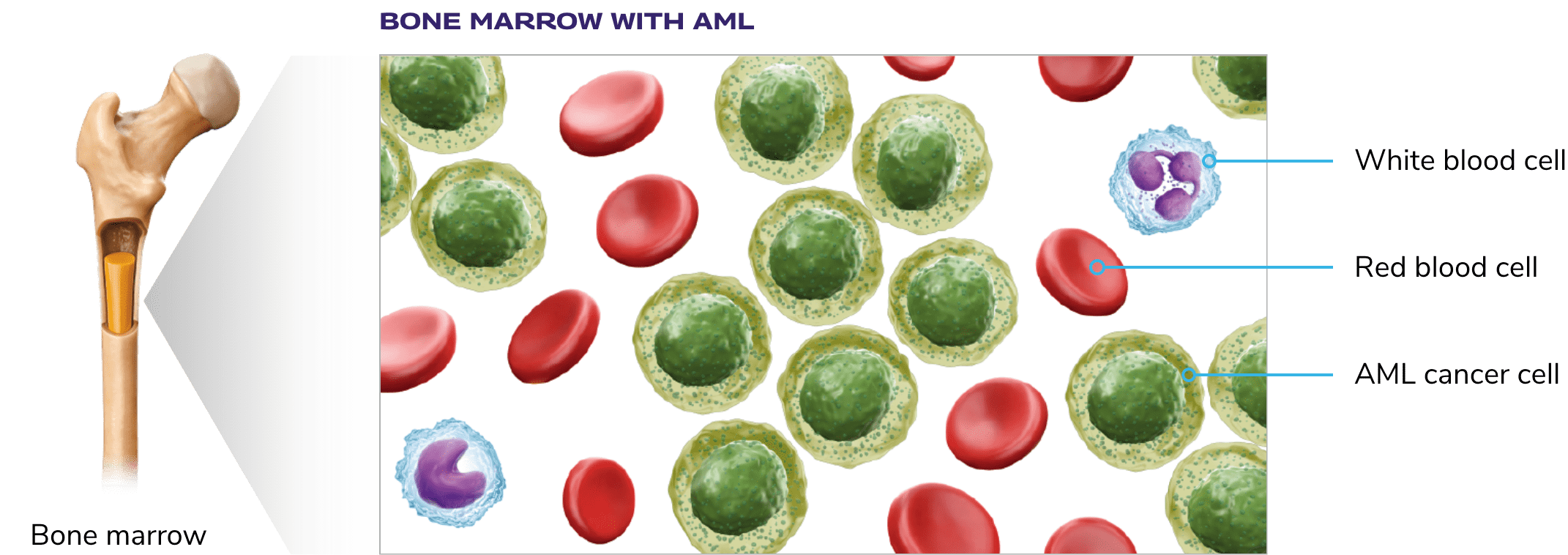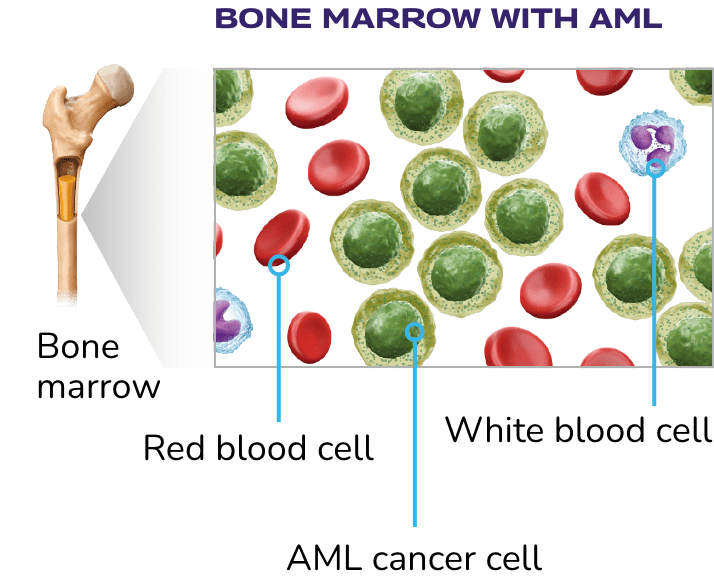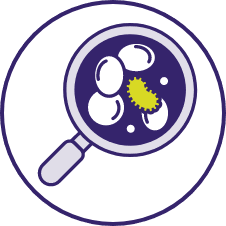Acute myeloid leukemia
To understand
FLT3
The acronym commonly used when
referring to AML that has a FLT3-ITD
mutation.
-ITD
The acronym commonly used when
referring to AML that has a FLT3-ITD
mutation.
+ AML,
The acronym commonly used when
referring to AML that has a FLT3-ITD
mutation.
first it’s important
to know what AML is. Acute myeloid leukemia, or
AML, is a type of cancer.
Cancer starts when cells in one part of the body begin to grow differently. There are many kinds of cancers. Cells in nearly any part of the body can turn into cancer.
- Leukemia is a broad term for cancers of blood cells
- Leukemia usually starts in the blood-forming cells of tissue like bone marrow
- Bone marrow is where blood cells are made


AML is one specific type of leukemia, but like other types of leukemia, it affects how blood cells develop, creating unhealthy blood cells.
What causes AML?
AML is caused by changes to the genes in some developing blood cells. These changes are called mutations, which can cause the blood cells to become leukemia cells. The mutation you have is called FLT3-ITD.
How common is AML?
AML is one of the most common types of leukemia in adults. Yet, it is still a rare type of cancer, accounting for only 1% of all cancers.

ABOUT
20,000
people are diagnosed
with AML each year


ABOUT
20,000
people are diagnosed with AML each year
Risk factors for AML
Your chance of getting a disease such as cancer can be affected by certain risk factors. Different cancers have different risk factors. Some risk factors can be changed through diet, exercise, or changing your lifestyle. Other risk factors, such as age or family history, cannot be changed.
Having one or more risk factors does not always mean that someone will get a disease, and some people develop cancer without having any risk factors. There are some known risk factors for AML, including:
Age
AML can happen at any age, but it is more common in older adults. AML is uncommon in people under the age of 45. On average, AML is first diagnosed around the age of 68.
Sex
AML occurs more often in men than in women.
Smoking

Many know that smoking is linked to lung, mouth, or throat cancer. However, cancer-causing substances in tobacco smoke can also spread through the bloodstream to many other parts of the body. Smoking is the only proven risk factor that is lifestyle related.
Family history

Having a close relative with AML could also mean you have a higher risk of getting the disease.
Some syndromes that are caused by genetic mutations present at birth may increase the risk of AML.
Exposure to chemicals

Certain chemicals can increase your risk for AML, including long-term exposure to benzene, which is a chemical used in some industries like rubber, oil, gasoline, and shoe manufacturing. It can also be found in cigarette smoke, car fumes, cleaning products, detergents, art supplies, and paints.

Extremely high doses of radiation, including radiation therapy from cancer treatment, can increase the risk of developing AML.
Blood disorders

Having certain blood disorders may also increase the risk of developing AML.












